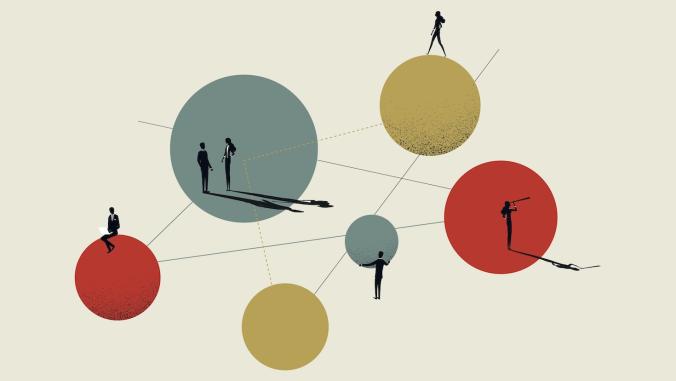Why a one-page job proposal is worth way more than a CV
<p>With these four steps, you can build an irresistible pitch that shows employers you can fill needs they may not know they have.</p>

Corkboard image by Thinglass via Shutterstock.
If you have a question for Shannon, send it to [email protected].
Dear Shannon,
I've been working as a sustainability consultant for the last three years and was in environmental management for over five years prior. I'm keen to move out of consulting into an in-house sustainability role, but have heard the rumor that companies are hiring from within. It must be true as I very rarely see companies advertising for mid-level sustainability staff. What can I do? Cold calling and unsolicited CV submissions seem so outdated. I know which companies I'd like to join and, through my consultancy work, I have a sense of the challenges they face. I think I could be great in an in-house role. Do you have any tips on how to get one?
Louise, Sydney
Hi Louise,
You are clearly proactive and ambitious! These are important traits that you'll need to employ if you want the job of your dreams. I agree that cold calling and unsolicited CV submissions are out of fashion. There are much smarter, more compelling tricks to help you find a way into the companies you are targeting. And it's great you are already clear about who your target audience is.
One idea I love is the one-page job proposal. It's clever because it puts the onus on you to show what you can do for a company in a concise way. Rather than focusing on who you are, what you do and what you need like a traditional CV or résumé does, the one-page job proposal focuses on the company: who they are, what they do and what they need. It's basically a sales pitch, but one that's squarely aimed at the company's weak spot.
The proposal's co-founder, Joanna Weidenmiller, says, "A résumé begs a company to find a problem. A company can say, 'Oh, you didn't do that!' Instead, a proposal says, 'This is what I can do for you and if you say no, that's fine, I'll go to your competition because I'm the one with the goods. I'm the one that has the ability that you need.'"
This is fighting talk, and I like it! But before you launch in, remember that you'll also need to highlight your personal brand in a job proposal to effectively identify your unique selling proposition and demonstrate your credibility. I've come up with a tool of my own that's inspired by the best bits of the one-page job proposal and the best bits of our killer CV — the "Make Your Own Dream Sustainability Job Pitch."
It has four core components — and guess what? They should all fit on one page!
Part 1: Pitch to their challenge
This is the first paragraph in your one-page pitch, and it needs to grab the sustainability director's attention. Once you've identified the companies you want to target, go on their websites and read everything you can about their sustainability initiatives.
Look closely at their sustainability reports. What are the key targets for the next phase of implementation? Which areas are they weak in?
Then look at their competitors. What are they doing? What are the sectoral benchmarks?
From here, it's up to you to imagine you already have a job in their team and devise a solution for them that you are uniquely placed to deliver. Your consultancy experience should help you to break this down into a concise, compelling paragraph that uses the company's own data and terminology. Make it clear that you know what they're trying to achieve, you have a solution and you have a plan to deliver it.
Part 2: Pitch what you do
This is what I like to call the "Elevator Pitch": four or five lines that set out your who, what, why, how and goal.
 The Who is what you want the reader to remember about you. The What is the value you can bring to their team in terms of impact. The Why is the unique benefit you bring to the business. The How is how what you do is different from the competition. Finally, The Goal is what your immediate objectives are and what you expect the reader to do for you — and vice versa.
The Who is what you want the reader to remember about you. The What is the value you can bring to their team in terms of impact. The Why is the unique benefit you bring to the business. The How is how what you do is different from the competition. Finally, The Goal is what your immediate objectives are and what you expect the reader to do for you — and vice versa.
I recommend that clients use the elevator as a verbal networking tool for conferences or meetings, when asked the dreaded "So what do you do?" question. In this case though, you can use it to communicate your USP in writing too.
Part 3: Pitch your summary story
You only have one chance to make a first impression, and the final paragraph of your pitch needs to resonate with a strong sense of the authentic you. This is where your personal profile (top four lines from your CV) comes in to communicate why this company should work with you and how you fit their company culture. It shouldn't be any more than four sentences, and should follow this formula.
1. Sentence One is your descriptive title, the total number of years' professional experience you have and what your overall impact has been to date.
2. Sentence Two is your top three skills and sectors.
3. Sentence Three is what sets you apart (maybe languages or education or live/work abroad).
4. Sentence Four is your objective — a 10-word reiteration of your first paragraph that shows how you will help them, not the other way around.
Part 4: Get the name of a human
Once you've got your pitch together, your final task is to find the physical and/or email addresses and names of the relevant sustainability directors. Try to reach out by phone first to make human contact and then follow up with your One Page Pitch by email. Including graphics or a video always gets people's attention.
Best of luck creating your own dream job!
Corkboard image by Thinglass via Shutterstock





